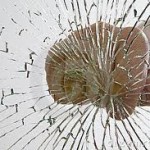 One of the most common ways I teach scene writing to writers is by pointing out examples where a scene suddenly jumps off the rails. Readers are experiencing a scene, in a particular place and time, when poof! The particular-ness vanishes.
One of the most common ways I teach scene writing to writers is by pointing out examples where a scene suddenly jumps off the rails. Readers are experiencing a scene, in a particular place and time, when poof! The particular-ness vanishes.
Writing Tip for Today: How can writers know if they are “staying in scene?”
In a Dark Would
One of the easiest ways to spot a scene that suddenly is not a scene is by searching for “would.” If your “scene” is moving along and you spot a “would,” it almost always signifies a continuum. If Grandma would bake her cherry pie whenever you visited, how can readers imagine a certain place or time? Let’s see what happens when we put the “would” back into scene. I’ve highlighted the bits that make it specific:
I walked into Grandma’s house that day, my mouth watering at the aroma of her special cherry pie. “Come on in, Lambkins,” she called. “I’m just putting the pie out to cool on the window sill.” It was only seven in the morning, but she had been up early, getting my birthday pie ready for my visit.
“Can we have pie for breakfast?” I stood on tiptoes to glimpse the still-bubbling treat.
Grandma smiled. “Well, it is your birthday.” She pulled out two small plates and forks.
The above won’t win any prizes but staying in scene shows how much more complete the reader experience can be.
You Always Never
The tell-tale “would” often rolls with two sidekicks: always and never. While knowing “always” or “never” can be useful to readers, if they come with the “would,” the scene has slipped into narrative. Always and never also suggest a continual condition, so readers can’t land on a specific incident. Writing “always” or “never,” especially with that “would,” almost always tells readers they aren’t anywhere specific in time or space.
Yes, a reader could “pick one,” but the details might be different. One day of always could be overcast, while another is sunny. Never could mean a quiet determination or a defiant refusal. Concrete sensory details (CSD) allow readers to experience a scene most fully.
Narrative or Scene?
Should writers always write scenes? No, of course not. As Elmore Leonard reminds us, “Skip the boring parts.” Narrative (telling) is useful for summarizing mundane events or for transitioning from one scene to another. Who wants to read a scene about brushing one’s teeth if it isn’t really part of the story? No one. Well, maybe–sometimes.
He got up early the next morning. The interview he’d been dreading was only an hour away. He threw on his best suit, wrangled with the tie and grabbed his briefcase. Backing the car out of the garage, he nearly hit the neighbor walking her dog. He put the window down, shouted, “Sorry Mrs. Goodkind!” and sped off. Traffic was awful, but he managed to find a back road and arrived at the office with five minutes to spare. He always made sure he looked sharp, but he would never be late for an interview, either.
In the above, do we think the character brushed his teeth? Even though it’s not included, we assume teeth-brushing is part of a regular grooming routine—one he’d not be likely to forget on an important day. Unless of course, he did forget. Then, it makes sense to mention:
He got out of the car and smoothed back his hair. In the side mirror he checked his teeth. Oh damnation. He’d forgotten to brush! He fumbled in his pocket for a breath mint.
When writing scenes, choose narrative when the detail is minor, or you need to get from one important bit to another. Unless, of course, your character needs a breath mint.




